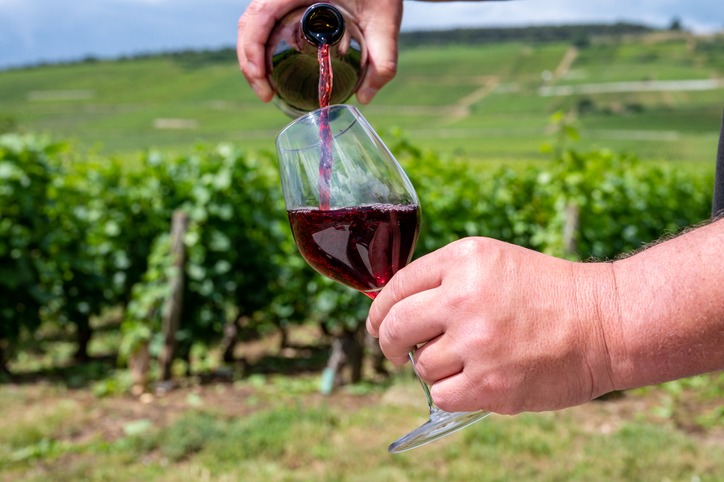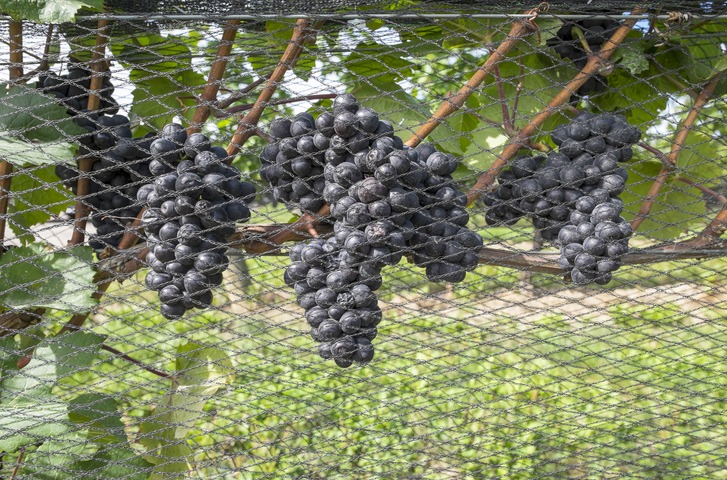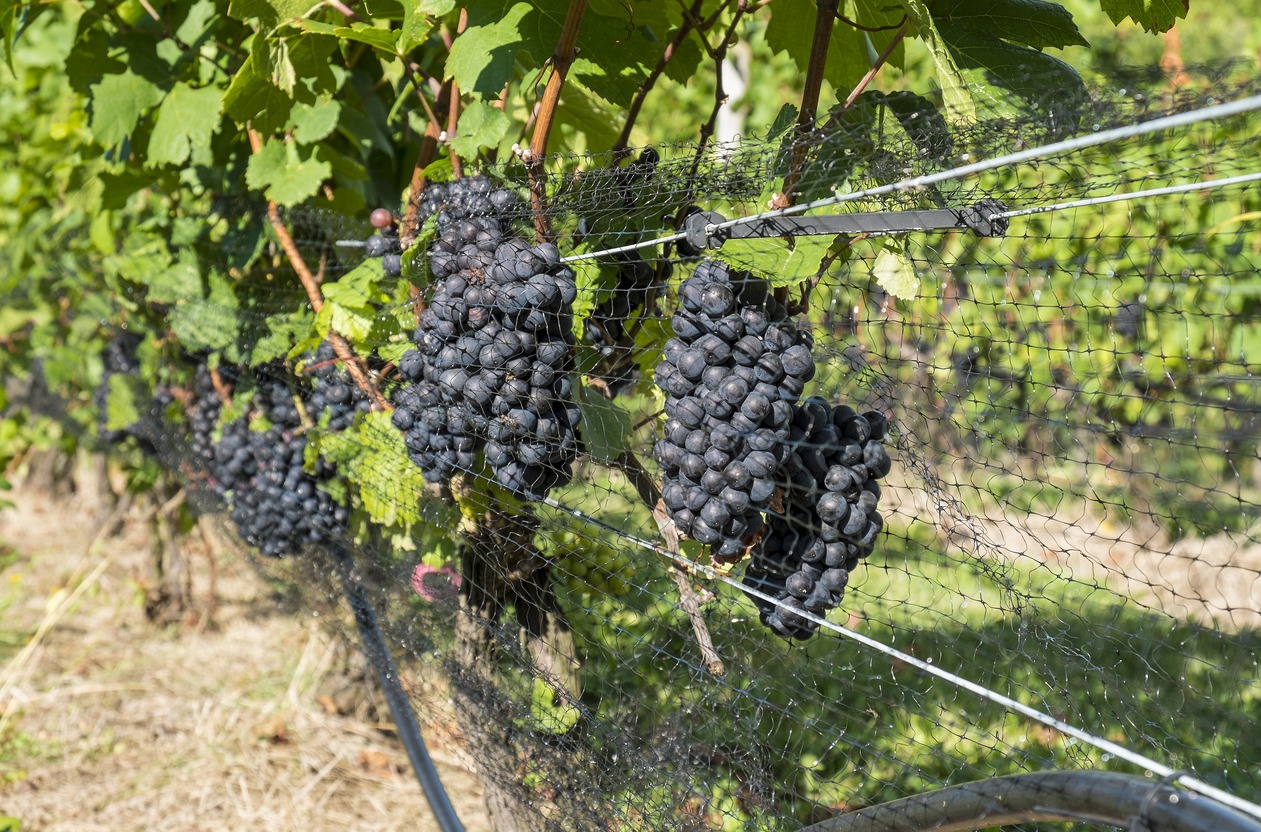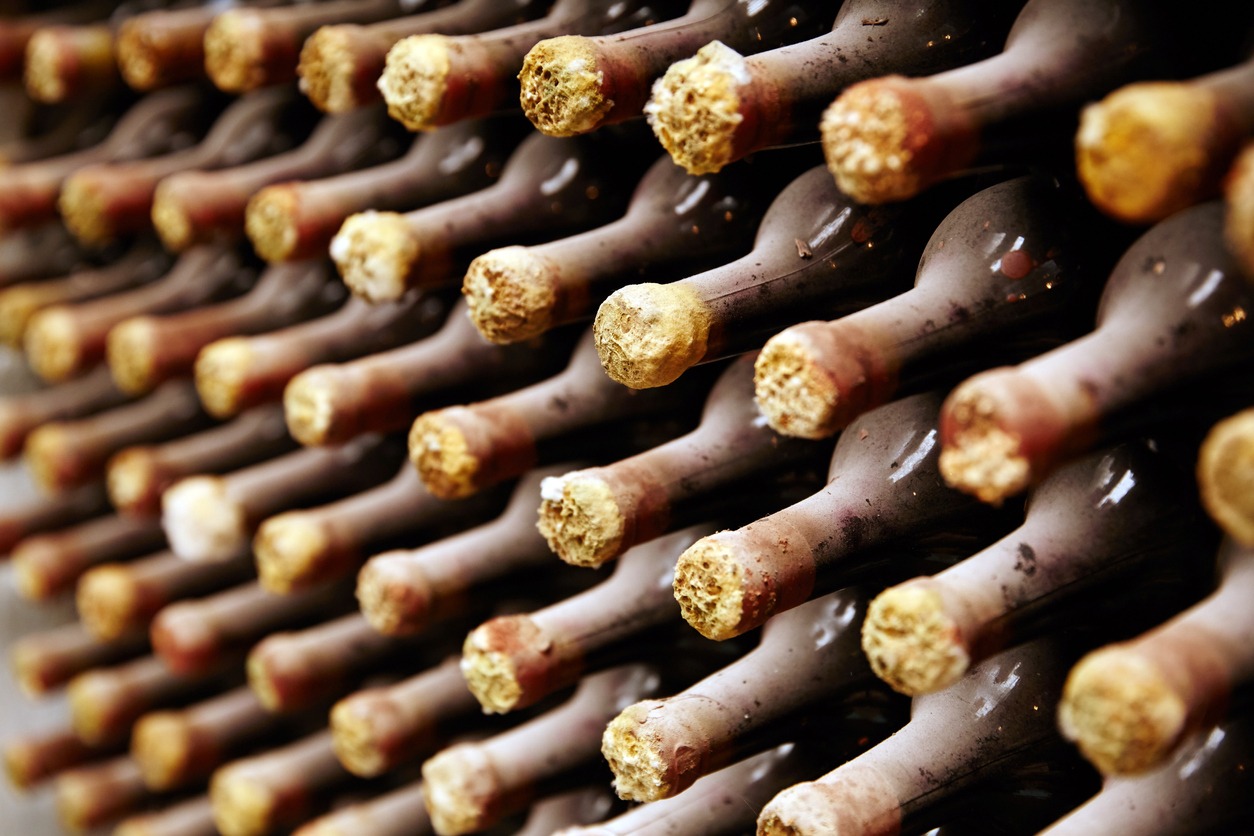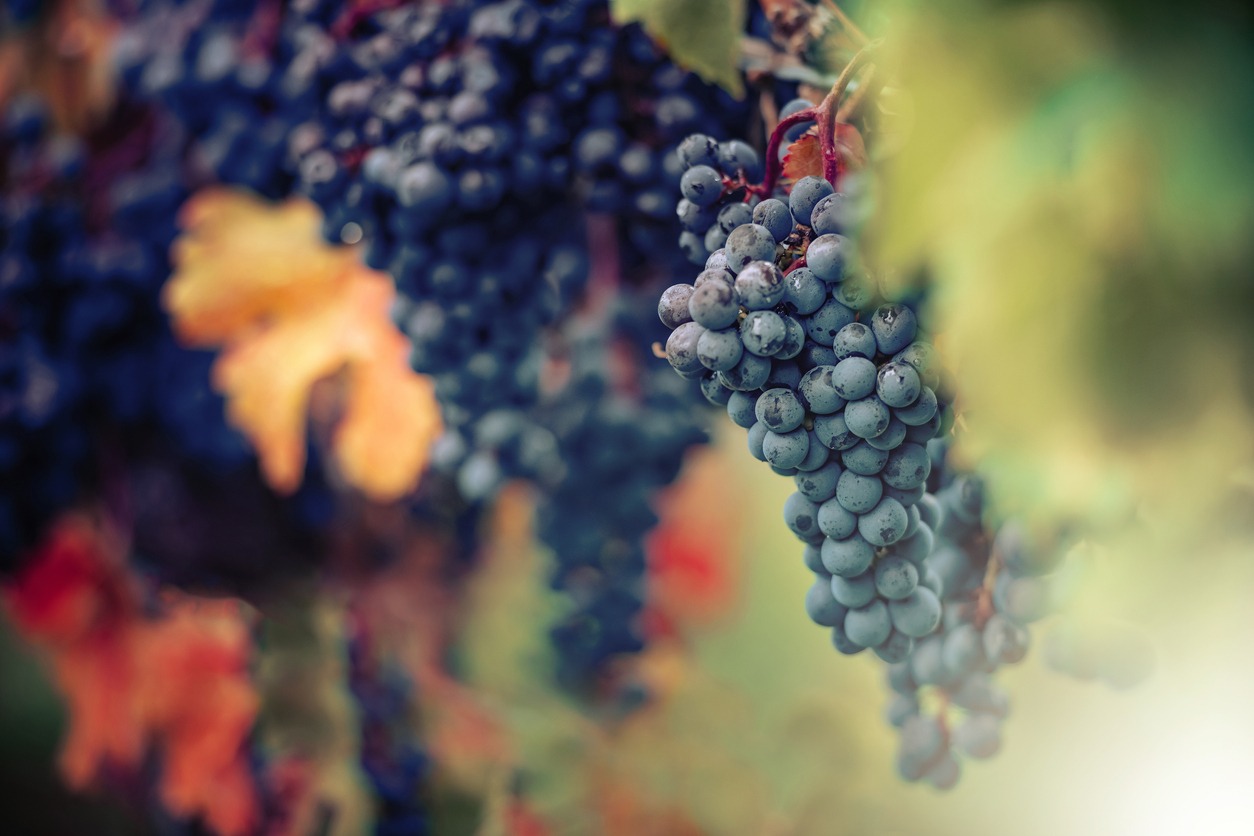Pinot Noir is a type of wine that’s known for being a bit more expensive than others. It’s loved by many for its great taste and smell. But its higher price makes some people curious about what makes it different from cheaper wines.
The reason Pinot Noir costs more has a lot to do with how tricky it is to grow and make the wine. The grapes are very picky about where they grow and need a lot of looking after. In this article, we’ll explore why Pinot Noir is pricier and what makes it stand out from other wines.
The Complexity of Cultivating Pinot Noir
Pinot Noir grapes are known for their thin skins and tight clusters, making them particularly delicate and susceptible to a variety of challenges. These characteristics contribute to the complexity of cultivating this varietal:
- Sensitivity to Climate: Pinot Noir thrives in cooler climates but can be quite sensitive to weather changes. Too much heat can overripe the grapes, while too little can prevent them from reaching their full potential.
- Disease and Pest Vulnerability: The tight clustering of Pinot Noir grapes promotes moisture retention, which can lead to fungal diseases. Their thin skins also make them more susceptible to pest attacks compared to thicker-skinned varieties.
The Demand for Precision in Viticulture
Growing Pinot Noir requires a level of precision and attention to detail that goes beyond many other grape varieties. The choice of where to plant Pinot Noir vines is critical. The grape’s success is highly dependent on specific soil types, slope angles, and microclimates. Also, careful management of the vine’s canopy is essential to ensure the right balance of sun exposure and air circulation around the tight clusters of grapes.
The Impact on Yield and Cost
The finicky nature of Pinot Noir significantly impacts its yield and, consequently, its cost. Due to its sensitivity and susceptibility to various viticultural hazards, Pinot Noir often produces lower yields than more robust varieties. This scarcity contributes to its higher price point. The high level of care and manual labor required to cultivate Pinot Noir grapes effectively increases production costs. From pruning to harvest, each step demands meticulous attention and expertise.
The Reward of Quality
Despite these challenges, the cultivation of Pinot Noir can be incredibly rewarding. The same factors that make Pinot Noir challenging to grow also contribute to its ability to express the unique characteristics of its terroir, leading to a wide variety of distinct and sought-after wines. The high quality and unique profile of Pinot Noir wines ensure a strong market demand, which can justify the higher costs associated with its cultivation.
The complexity of cultivating Pinot Noir is proof of the dedication and passion of vintners who choose to navigate its challenges. The result is a wine celebrated for its elegance and depth, reflecting the intricate dance between grape, terroir, and human touch.
Terroir’s Role in Pinot Noir Production
Terroir is a French term that refers to the unique combination of natural factors in a specific vineyard site that influences the quality and characteristics of wine, including climate, soil, topography, and local vegetation. In the world of Pinot Noir, terroir is not just important; it’s everything. This varietal is like a mirror, reflecting the smallest nuances of the place it’s grown, more so than many other grape types.
The Significance of Terroir for Pinot Noir
Pinot Noir’s sensitivity turns terroir into a critical player in its cultivation and the resulting wine’s profile:
- Climate Sensitivity: Pinot Noir grapes flourish in cooler climates, where they can ripen slowly, preserving their delicate aromas and acidity. This makes regions with cooler, temperate climates, like Burgundy in France and parts of California and Oregon in the USA, ideal for Pinot Noir production.
- Soil Preferences: Pinot Noir shows a particular affinity for well-drained soils, such as limestone and chalk, which contribute to the mineral undertones in the wine. The right soil type can enhance the grape’s natural flavors, adding complexity to the wine.
- Topographical Influence: The aspect and elevation of vineyard sites affect the microclimate around Pinot Noir vines, influencing the grape’s ripeness and flavor profile. Sloped vineyards, for example, offer better drainage and sun exposure, key factors for this grape variety.
Terroir’s Impact on Pinot Noir’s Price
The crucial role of terroir in Pinot Noir production directly impacts its market price in several ways:
- Limited Suitable Land: Given its specific terroir requirements, there’s only a limited amount of land that’s suitable for high-quality Pinot Noir production. This scarcity of prime vineyard sites contributes to the higher cost of these wines.
- Variability and Uniqueness: The distinct expression of terroir in each bottle of Pinot Noir makes it highly sought after by connoisseurs and collectors, driving up prices. Wines from renowned terroirs command premium prices due to their unique characteristics and limited availability.
- Investment in Land and Care: Vintners often invest heavily in finding and maintaining the perfect terroir for Pinot Noir, including costly soil treatments and precision farming techniques, further adding to the wine’s cost.
The Intangible Value of Terroir
While terroir’s influence on Pinot Noir contributes to its higher price, it also adds an intangible value that transcends cost. The ability of Pinot Noir to express the essence of its terroir creates a unique experience for the wine drinker, offering a taste of the place and the conditions under which the grapes were grown. This connection to the land and the environment adds depth and story to each glass of Pinot Noir, making it not just a wine but an experience.
Terroir’s role in Pinot Noir production is a testament to the intricate relationship between grape, land, and climate. This interplay is what makes Pinot Noir one of the most terroir-expressive wines in the world and why its production is both a challenge and a craft highly valued by wine enthusiasts.
Winemaking Techniques and Their Impact on Price
Winemaking techniques play a pivotal role in the development of a wine’s character, especially for a variety as sensitive as Pinot Noir. The methods employed from harvest to bottling can greatly influence the quality and complexity of the wine, often requiring a higher level of craftsmanship and attention to detail. This is particularly true for Pinot Noir, where the winemaking process is as much an art as it is a science.
Key Techniques in Pinot Noir Production
- Hand Harvesting: Due to their delicate nature, Pinot Noir grapes are often handpicked to prevent bruising and premature crushing, ensuring that only the best-quality grapes make it to the winery.
- Cold Soaking: Before fermentation, the grapes may undergo a cold soak for several days to gently extract color and flavor without the harshness of alcohol, enhancing the wine’s aromatic and flavor complexity.
- Gentle Fermentation: Pinot Noir fermentation is typically conducted at cooler temperatures to preserve the grape’s delicate aromas. This process can require more precise temperature control equipment and monitoring.
- Oak Aging: The choice of oak barrels (including the type of oak, the age, and the toast level of the barrel) is crucial for Pinot Noir, as it can significantly influence the wine’s flavor profile. The subtlety required often means using more expensive, high-quality barrels.
Impact on Production Costs
The specialized techniques used in Pinot Noir production have a direct impact on its cost:
- Labor Intensive: The hands-on approach required for Pinot Noir increases labor costs from the vineyard to the winery.
- Equipment and Materials: The need for specific fermentation and aging equipment, as well as the preference for high-quality oak barrels, adds significant expense to the winemaking process.
- Time Investment: Techniques like cold soaking and extended barrel aging require more time before the wine can be released, tying up resources and adding financial pressure.
The Price of Perfection
The pursuit of perfection in Pinot Noir winemaking is a costly endeavor, reflected in the price of the final product. The meticulous care and specific techniques employed not only enhance the wine’s quality but also contribute to its uniqueness and value. This is particularly evident in boutique wineries and esteemed wine regions, where the emphasis on quality over quantity further elevates the price.
The Value Added by Winemaking
While the advanced winemaking techniques used for Pinot Noir do contribute to its higher price point, they also add immeasurable value to the wine itself. The skill and artistry involved in crafting Pinot Noir result in a wine that is not just a beverage but an expression of the winemaker’s vision and the culmination of countless decisions made throughout the winemaking process. This intrinsic value, born from the combination of science, art, and tradition, is what makes Pinot Noir so prized among wine lovers and collectors alike.
In essence, the winemaking techniques for Pinot Noir, while contributing to its higher cost, are fundamental to achieving the depth, complexity, and elegance that this varietal is celebrated for. The price reflects not just the physical inputs but the intangible qualities of craftsmanship, tradition, and the winemaker’s personal touch.
The Influence of Aging Potential on Price
The aging potential of a wine refers to its capacity to develop and improve in flavor, aroma, and complexity over time when stored under proper conditions. Pinot Noir, renowned for its depth and complexity, often possesses a significant aging potential, which can influence its price in the market. The interaction between the wine’s acidic structure, tannins, and compounds derived from the winemaking process determines its ability to age gracefully.
Factors Contributing to Aging Potential
- Tannin Structure: While Pinot Noir is not as tannic as some other red wines, the balance and quality of its tannins contribute to its aging ability. Well-integrated tannins provide a framework for the wine to evolve over time.
- Acidity: The natural acidity in Pinot Noir acts as a preservative, maintaining the wine’s freshness and vibrancy, which is crucial for the aging process.
- Winemaking Techniques: Decisions made during the winemaking process, such as the use of oak aging and the extent of extraction, can enhance the wine’s complexity and stability, contributing to its longevity.
Aging Potential’s Impact on Price
- Perceived Value: Wines with a longer aging potential are often perceived as higher quality, justifying a higher price point. Consumers are willing to pay more for a wine that promises complexity and enhanced taste over time.
- Storage and Care Costs: The costs associated with aging wine, including proper storage facilities and the risk of holding inventory for extended periods, contribute to the higher prices of wines with aging potential.
- Scarcity Over Time: As wines age and improve, they often become scarcer in the market. This scarcity, combined with increased demand from collectors and enthusiasts, can drive up prices.
The Long-Term Investment in Pinot Noir
For collectors and aficionados, Pinot Noir represents not just a wine to be enjoyed in the present but also a potential investment for the future. The anticipation of how a particular bottle will evolve adds an element of excitement and speculation, making aged Pinot Noirs particularly valuable. The willingness of enthusiasts to invest in aged Pinot Noir contributes to its higher pricing, especially for bottles from esteemed vintages and regions.
The Balance of Immediate Enjoyment and Future Reward
While the aging potential of Pinot Noir contributes to its allure and value, many producers also strive to create wines that are accessible and enjoyable in their youth. This balance between immediate pleasure and the promise of future complexity is a hallmark of well-crafted Pinot Noir, appealing to a broad spectrum of wine lovers and further influencing its market price.
The aging potential of Pinot Noir is a significant factor in its pricing structure, reflecting the wine’s quality, the cost of long-term storage, and the anticipation of its evolution. This potential for transformation over time adds not only to the mystique of Pinot Noir but also to its value, making it a prized possession for both immediate consumption and a treasure to be savored in the future.
Market Demand and Consumer Perception
Market demand for Pinot Noir is influenced by a combination of factors, including its reputation, consumer tastes, and global wine trends. Pinot Noir has carved out a niche for itself among wine enthusiasts who appreciate its complexity, elegance, and versatility. This demand is not static; it fluctuates based on various factors such as consumer preferences, economic conditions, and even pop culture influences.
Factors Influencing Consumer Perception
- Reputation and Prestige: Pinot Noir enjoys a prestigious reputation, particularly those from renowned regions like Burgundy. This reputation enhances its appeal, making it a sought-after choice for both casual consumers and connoisseurs.
- Taste Profile: The unique flavor profile of Pinot Noir, characterized by its balance of fruit, acidity, and subtlety, appeals to a broad spectrum of palates, contributing to its widespread popularity.
- Media and Cultural Influence: Films and media that feature Pinot Noir can significantly impact consumer interest and demand. A notable example is the increased popularity of Pinot Noir following its prominent role in the film “Sideways.”
Impact of Consumer Perception on Price
- Willingness to Pay: The perception of Pinot Noir as a high-quality, prestigious wine leads consumers to be willing to pay more for it, driving up its price.
- Brand and Region Recognition: Wines from well-known Pinot Noir-producing regions or esteemed wineries can command higher prices due to their recognized quality and the assurance of a certain taste experience.
- Limited Editions and Exclusivity: Limited production runs, single-vineyard bottlings and special editions of Pinot Noir can create a sense of exclusivity, further elevating consumer demand and willingness to pay premium prices.
The Role of Consumer Education
As consumers become more knowledgeable about wine, their appreciation for the nuances of Pinot Noir and its production can increase. Wine education, including tastings, courses, and wine tourism, plays a significant role in shaping consumer perception and demand. Educated consumers are often more willing to invest in higher-priced Pinot Noirs, understanding the value and craftsmanship behind the wine.
Market Trends and Global Influence
Global wine trends also play a role in shaping the demand for Pinot Noir. As emerging wine regions around the world gain recognition for their Pinot Noir, the global market becomes more competitive, influencing price points and consumer choices. Additionally, trends towards organic and biodynamic wines have seen a rise in demand for Pinot Noir produced in accordance with these practices.
Market demand and consumer perception significantly influence the price of Pinot Noir. The varietal’s reputation for quality, coupled with its unique taste profile and the impact of cultural influences, drives consumer interest and willingness to pay. As the global wine landscape evolves, so too does the demand for Pinot Noir, reflecting the dynamic interplay between consumer preferences, market trends, and the intrinsic qualities of this esteemed wine.
Regional Factors Affecting Pinot Noir Prices
The region where Pinot Noir is grown significantly influences its price due to differences in climate, soil, viticulture practices, and regional reputation. Pinot Noir reflects its terroir more distinctly than many other grape varieties, making the region of origin a key factor in the character and quality of the wine.
Key Regional Factors
- Climate and Terroir: The microclimate and terroir of a region, including factors like temperature, sunlight, and soil composition, greatly affect the grape’s development and the wine’s final profile. Regions with optimal conditions for Pinot Noir, such as Burgundy in France and parts of California, Oregon, and New Zealand, can produce wines of exceptional quality, commanding higher prices.
- Cost of Production: Land costs, labor rates, and the economic conditions of a region influence the cost of producing Pinot Noir. In prestigious wine-growing areas, where land is scarce and highly valued, these costs are often higher and reflected in the price of the wine.
- Reputation and Branding: Regions with a long-standing history and reputation for producing high-quality Pinot Noir, like Burgundy, benefit from strong branding that can command premium prices. Wines from these regions are often sought after by collectors and enthusiasts, further driving up prices.
Regional Examples and Their Impact
- Burgundy, France: Known as the traditional home of Pinot Noir, Burgundy’s wines are renowned for their quality and complexity. The region’s prestigious reputation, coupled with strict appellation controls and limited production, results in some of the highest-priced Pinot Noirs in the world.
- California, USA: Regions like Sonoma Coast and Russian River Valley in California offer ideal conditions for Pinot Noir, producing wines with distinct character. The combination of modern viticulture techniques, marketing, and the growing reputation of Californian wines contribute to their premium pricing.
- Oregon, USA: Oregon, particularly the Willamette Valley, has gained a reputation for its Pinot Noir, characterized by its balance and elegance. The focus on small-batch, high-quality production in this region influences the higher price points of its wines.
- New Zealand: Regions like Central Otago and Marlborough have emerged as significant producers of Pinot Noir, known for their fruit-forward and vibrant styles. The growing international recognition of New Zealand’s Pinot Noir has led to an increase in demand and prices.
The Global Pinot Noir Market
The global market for Pinot Noir is dynamic, with emerging wine regions contributing to a diverse range of styles and price points. Advances in viticulture and winemaking techniques in these new regions, combined with strategic marketing, are challenging traditional perceptions of value and quality in the Pinot Noir market.
Regional factors play a crucial role in determining the prices of Pinot Noir. The interplay between climate, terroir, production costs, and regional reputation shapes the quality and character of the wine, influencing consumer preferences and market prices. As the global wine landscape continues to evolve, the significance of these regional influences remains a key factor in the valuation of Pinot Noir wines.
Conclusion
The price of Pinot Noir is influenced by a variety of factors, from the challenges of growing and producing this delicate grape to the regions where it thrives best. The winemaking techniques, aging potential, and the market demand shaped by consumer perception all play a part in setting its price.
Each bottle of Pinot Noir tells a story of its unique journey from vine to wine, reflecting the care, expertise, and conditions that contribute to its final quality. Understanding these factors helps explain why Pinot Noir often comes with a higher price tag but also why many wine lovers consider it well worth the investment for the exceptional taste experience it offers.
